Let me create the article now with 20 unique concrete walkway ideas based on my research.Creating a beautiful concrete walkway transforms your outdoor space while providing a durable, long-lasting pathway to your home. Modern concrete techniques offer endless design possibilities that rival more expensive materials like natural stone or brick. From traditional stamped patterns that mimic cobblestone streets to contemporary geometric designs that make bold architectural statements, concrete walkways can be customized to complement any home style. These pathways serve as more than just functional routes—they become integral elements of landscape architecture that enhance curb appeal and guide visitors through your outdoor space. Whether you're replacing an existing walkway or creating a new pathway, these diverse concrete walkway ideas will inspire you to design a stunning entrance that reflects your personal style.
1. Stamped Concrete Walkway with Cobblestone Pattern
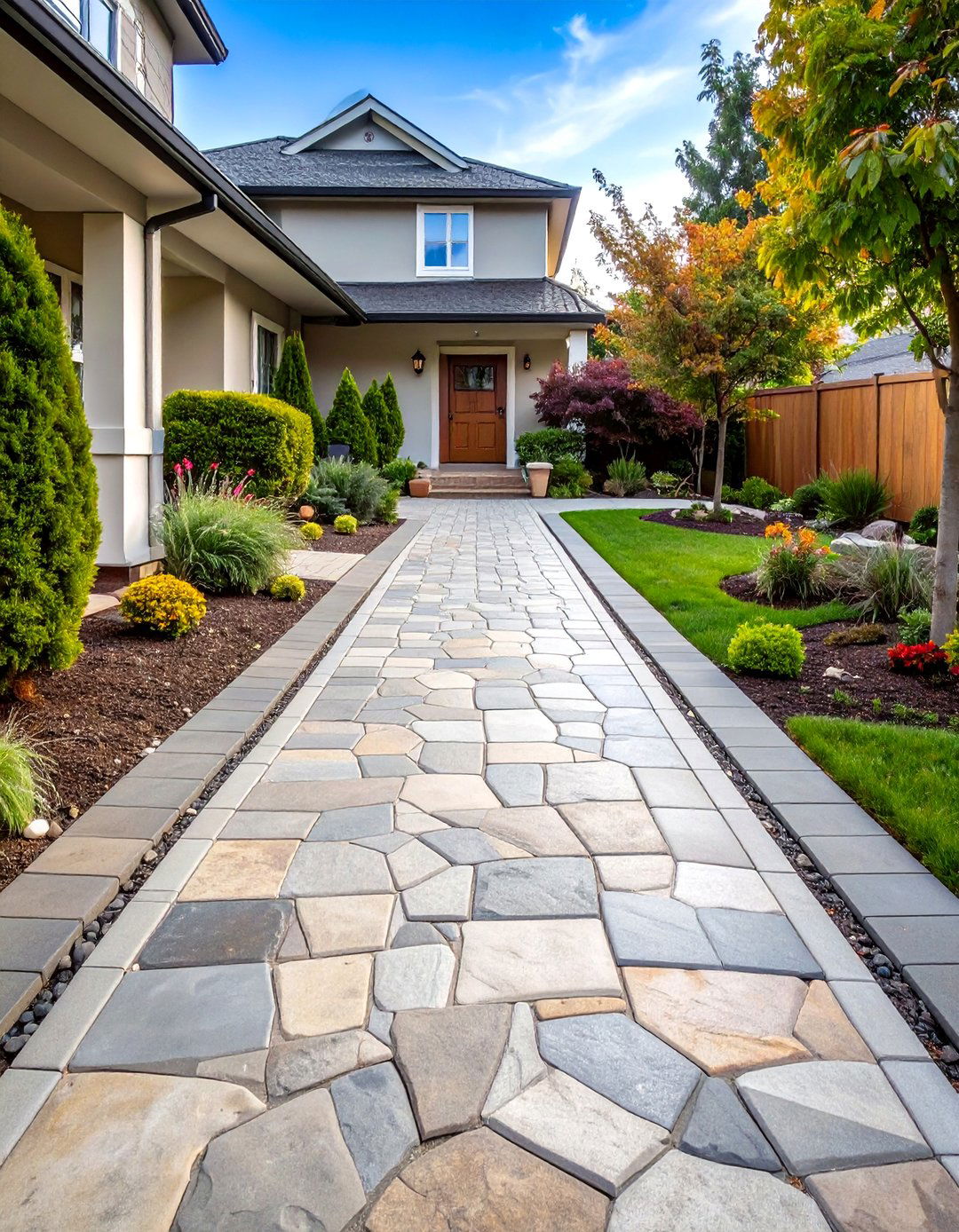
With the charm of a concrete walkway, you can step back in time while staying firmly connected to today's world using the ancient technique of stamping. A stamped concrete walkway featuring cobblestone patterns delivers timeless elegance with exceptional durability. The decorative stamp pattern options include various cobblestone textures that can replicate Old Granite and Roman Slate textures in running patterns. This design technique involves pressing specialized rubber stamps into freshly poured concrete to create realistic cobblestone impressions. The irregular stone shapes and varied sizes characteristic of traditional cobblestone streets add authentic old-world character to your entrance. The elegant cobblestone pattern captivates with its blend of tradition and sophistication, inspired by historical significance. Choose from multiple color options including gray, tan, or brown to coordinate with your home's exterior palette.
2. Exposed Aggregate Concrete Walkway

An exposed aggregate concrete walkway offers spectacular decorative effects at reasonable cost while providing excellent slip resistance. The color palette of an exposed aggregate surface is largely determined by the type of decorative stone that's used, ranging from delicate pastels such as pink or rose quartz, to rich hues such as dark blue or red granite. This technique reveals beautiful decorative stones embedded within the concrete surface by washing away the top layer of cement paste. Exposed aggregate can be stained or dyed to shift or change the color upon completion, and you can add integral color into the concrete mix so the cement between stones adds a complete color hue. The natural pebbled texture creates visual interest while offering superior traction in wet conditions, making it both beautiful and practical for outdoor walkways.
3. Acid Stained Concrete Walkway with Earth Tones
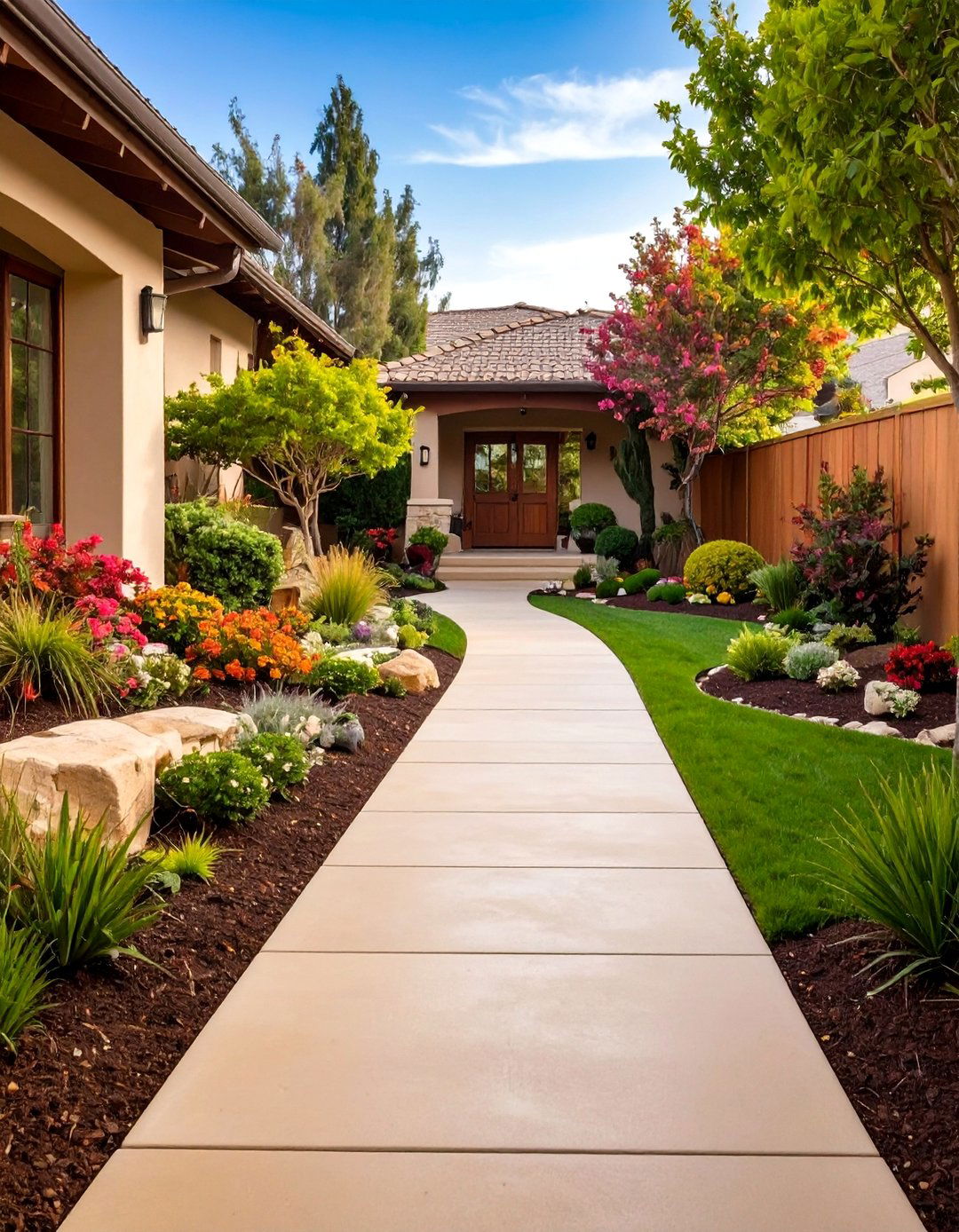
Transform ordinary gray concrete into a stunning earth-toned masterpiece with acid staining techniques. Reactive, or acid, stains can create great mottled effects and penetrate deeper while lasting longer than other coloring methods. Acid stained concrete walkways develop unique color variations and natural mottling patterns that cannot be replicated. The color selection is generally limited to subtle earth tones, such as tans, browns, terra cottas, and soft blue-greens, creating natural color variations that add character. Every concrete floor contains different amounts of minerals and varying porosity, resulting in more vibrant colorations and shades on the same floor, ensuring no two floors will ever look alike. This organic appearance perfectly complements natural landscaping while providing a sophisticated, weathered look that improves with age.
4. Geometric Patterned Concrete Walkway

For those seeking contemporary flair, geometric patterned concrete walkways create striking visual statements with clean, modern lines. Modern geometric patterns like hexagonal, wave, or puzzle designs add a fresh, contemporary touch to pathways, creating unique visual interest. These designs feature precise angular cuts and symmetrical layouts that complement modern architectural styles. Modern geometric shapes present an exciting opportunity to transform outdoor spaces into stunning visual statements, with geometric symmetry and pattern repetition creating striking designs. Popular geometric options include interlocking rectangles, hexagonal tiles, diamond patterns, and abstract angular compositions. Typically shapes such as rectangles or circles are used to create bold geometric patterns, with spaces between poured concrete pavers seeded with grass or low ground cover. The mathematical precision of these patterns creates sophisticated pathways that serve as outdoor art installations.
5. Wood Plank Stamped Concrete Walkway
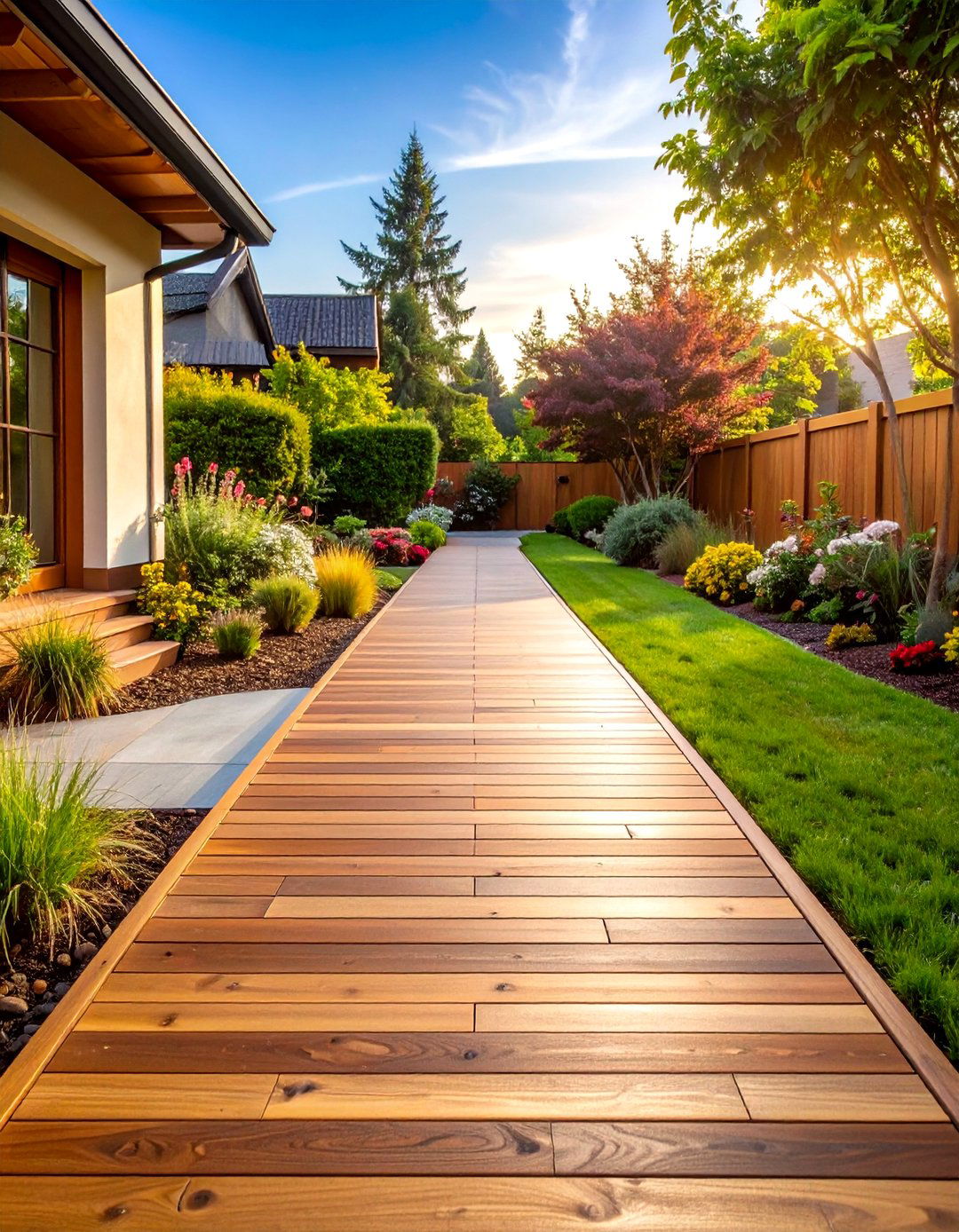
Achieve the warm beauty of natural wood without maintenance concerns through wood plank stamped concrete walkways. Wood plank-stamped concrete can beautifully mimic the look of real wood while offering the practicality of concrete, using specialized molds that imprint realistic wood grain patterns. This technique captures every detail of authentic timber, from knot patterns to grain variations, creating convincing wooden plank appearances. The wood grain stamp design provides the warmth and beauty of wood without maintenance requirements and can be used to create stunning outdoor surfaces. Rich golden-brown hues and subtle grain textures bring the charm of weathered wood to life, offering a cost-effective yet stylish solution that mirrors anything from rustic, reclaimed wood to sleek hardwood finishes. Choose from various wood tones and plank sizes to match your desired aesthetic, whether rustic barn wood or polished hardwood.
6. Brick Pattern Concrete Walkway

Capture the classic appeal of traditional brick pathways with stamped concrete walkway designs that replicate authentic brick patterns. Vintage brick looks for stamped concrete walkways provide excellent choices for infusing timeless elegance, especially with textured finishes that mimic real brick using earthy tones and unique patterns like herringbone. This technique offers the sophisticated appearance of hand-laid brick without the associated costs and maintenance requirements. Some popular pattern choices include brick patterns, cobblestone designs, slate or flagstone textures, wood plank imitations, and tile-inspired layouts. Herringbone is a classic pattern featuring interlocking rectangular shapes, creating a visually interesting and dynamic surface. The running bond, stack bond, and herringbone patterns each offer distinct visual effects, from formal elegance to casual charm, allowing customization to complement your home's architectural style.
7. Large Format Concrete Walkway Pavers
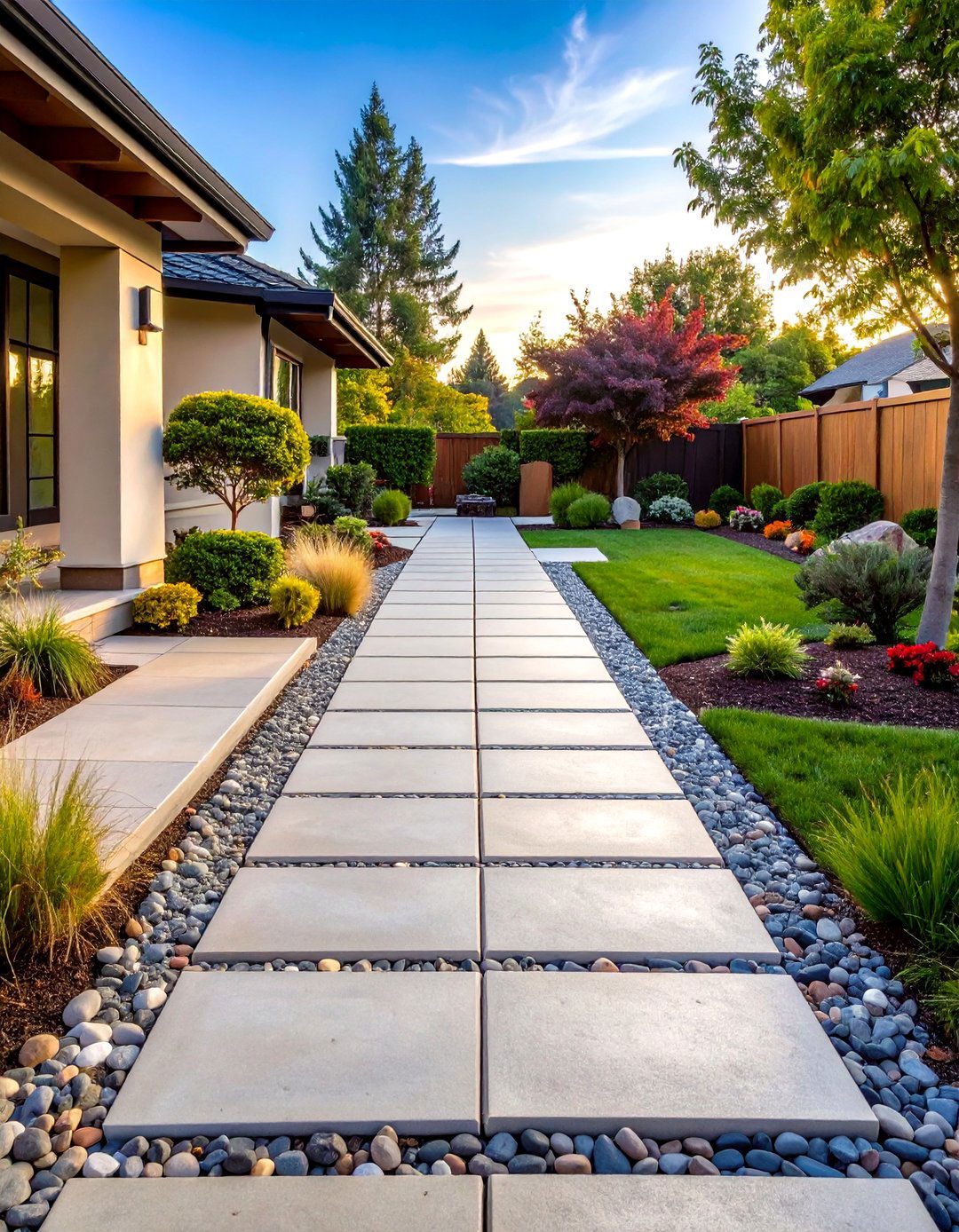
Create a bold contemporary statement with large format concrete walkway pavers that mimic oversized stepping stones. For a more contemporary walkway, concrete can be poured in oversized pavers creating the look of giant stepping stones, with spaces between seeded with grass or low ground cover. This modern approach typically features rectangular or square sections measuring 3×3 feet or larger, separated by planting strips or decorative aggregate. This design consists of 4' by 4' squares of concrete laid in a straight direction, creating a pattern and leading to the entry, with smooth river rock filling between sections. The minimalist aesthetic emphasizes clean lines and geometric precision while allowing for creative landscaping between pavers. These substantial concrete sections provide stable walking surfaces while creating visual rhythm and architectural interest that complements modern home designs.
8. Slate Textured Concrete Walkway
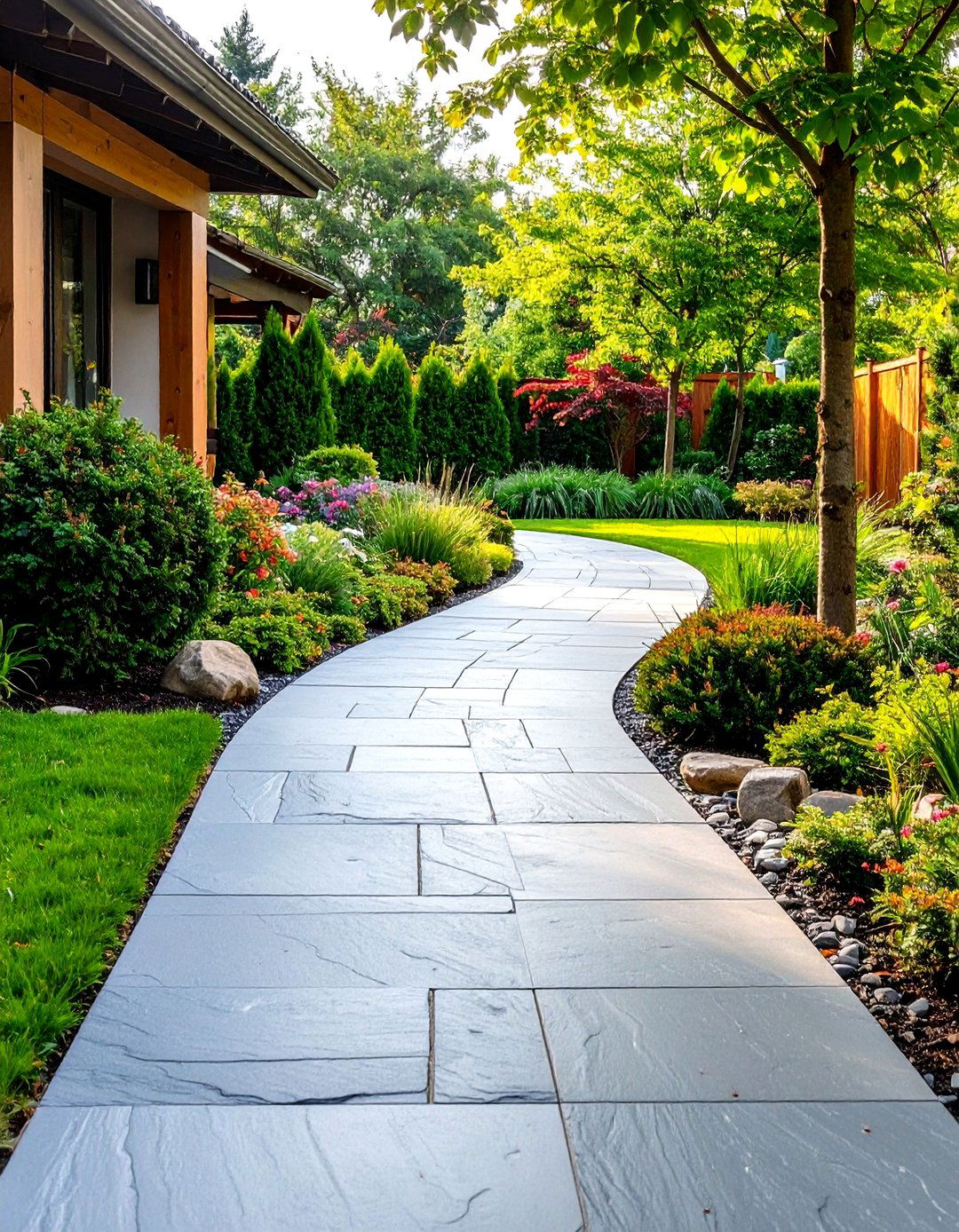
Replicate the sophisticated elegance of natural slate with textured concrete walkway surfaces that capture every nuance of this premium stone. Ashlar Slate patterns replicate the appearance of natural slate, providing an elegant and sophisticated look to any outdoor space. Innovative sidewalk slate mats are cast from real stone molds that can replicate Old Granite and Roman Slate textures in running patterns. This stamping technique creates realistic slate impressions with natural edge variations and subtle surface textures that convincingly mimic authentic stone. Most people think that a truck delivered pieces of slate and they were hand-placed, when in fact this is an inlaid slate deck created using specialized concrete techniques. Various slate patterns are available, from random ashlar layouts to more structured arrangements, each offering the luxurious appearance of natural stone at a fraction of the cost.
9. Curved Concrete Walkway Design
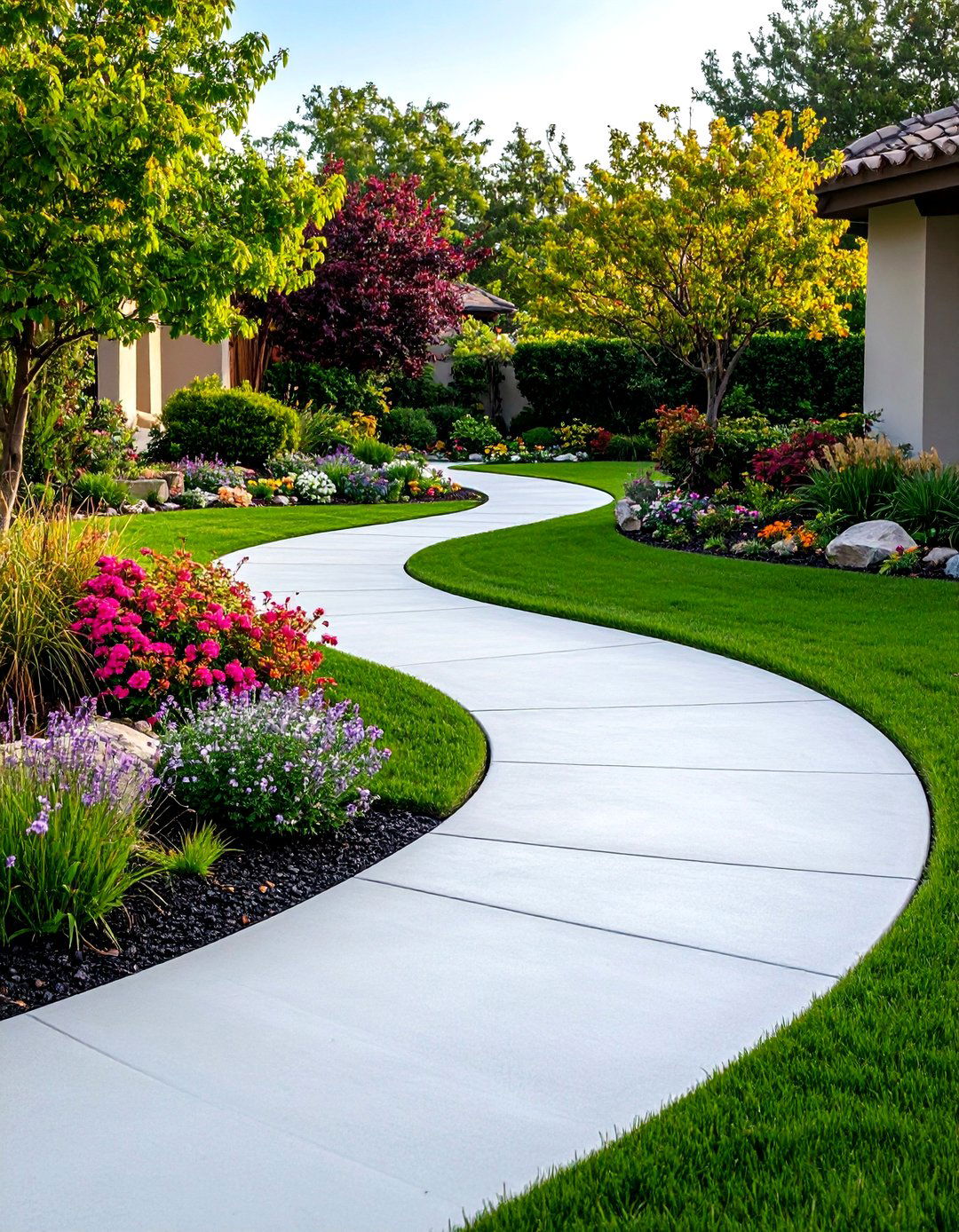
Unlike straight formal approaches, curved concrete walkways create welcoming, organic entries that guide visitors gracefully through your landscape. A curved concrete path gives an informal, organic entry to homes, with large sweeping curves allowing visitors to be guided through front yard landscaping. These flowing designs soften architectural lines while creating opportunities for interesting plantings along the pathway curves. Curved walkways can incorporate multiple decorative techniques, from stamped patterns that follow the gentle arcs to contrasting borders that emphasize the flowing lines. The large sweeping curve allows visitors to get a good look at the front of your home while creating a more natural, less formal approach. This design approach works particularly well with traditional and cottage-style homes where informal elegance is desired over stark geometric precision.
10. Concrete Walkway with Decorative Borders
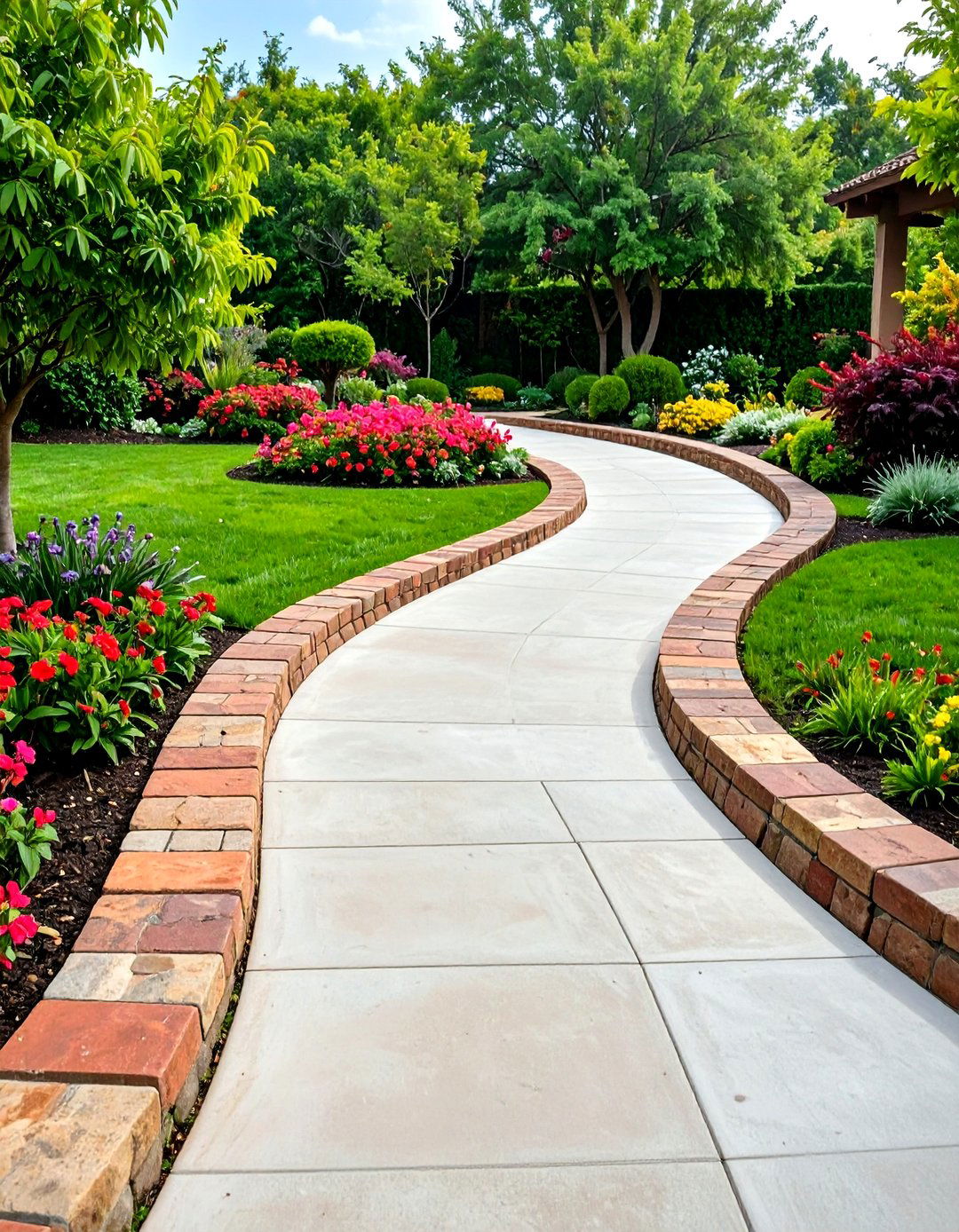
Enhance your concrete walkway design with distinctive borders that frame the pathway and create sophisticated visual definition. Adding a border to your concrete walkway can change the look drastically from an average slab to a one-of-a-kind path, with materials like brick, stone, flagstone, slate, or wood serving as border options. Border treatments can involve contrasting colors, different textures, or alternative materials that complement the main walkway surface. Border accents add a decorative border around stamped concrete surfaces using different stamp patterns or colors, creating a defined and polished look that enhances overall design. Decorative concrete scoring cuts may be used to separate acid stain colors, though separating colors usually involves a few extra days' labor. Popular border approaches include contrasting stained concrete bands, stamped patterns different from the main surface, or integrated planting strips that soften hard edges.
11. Diamond Cut Concrete Walkway Pattern
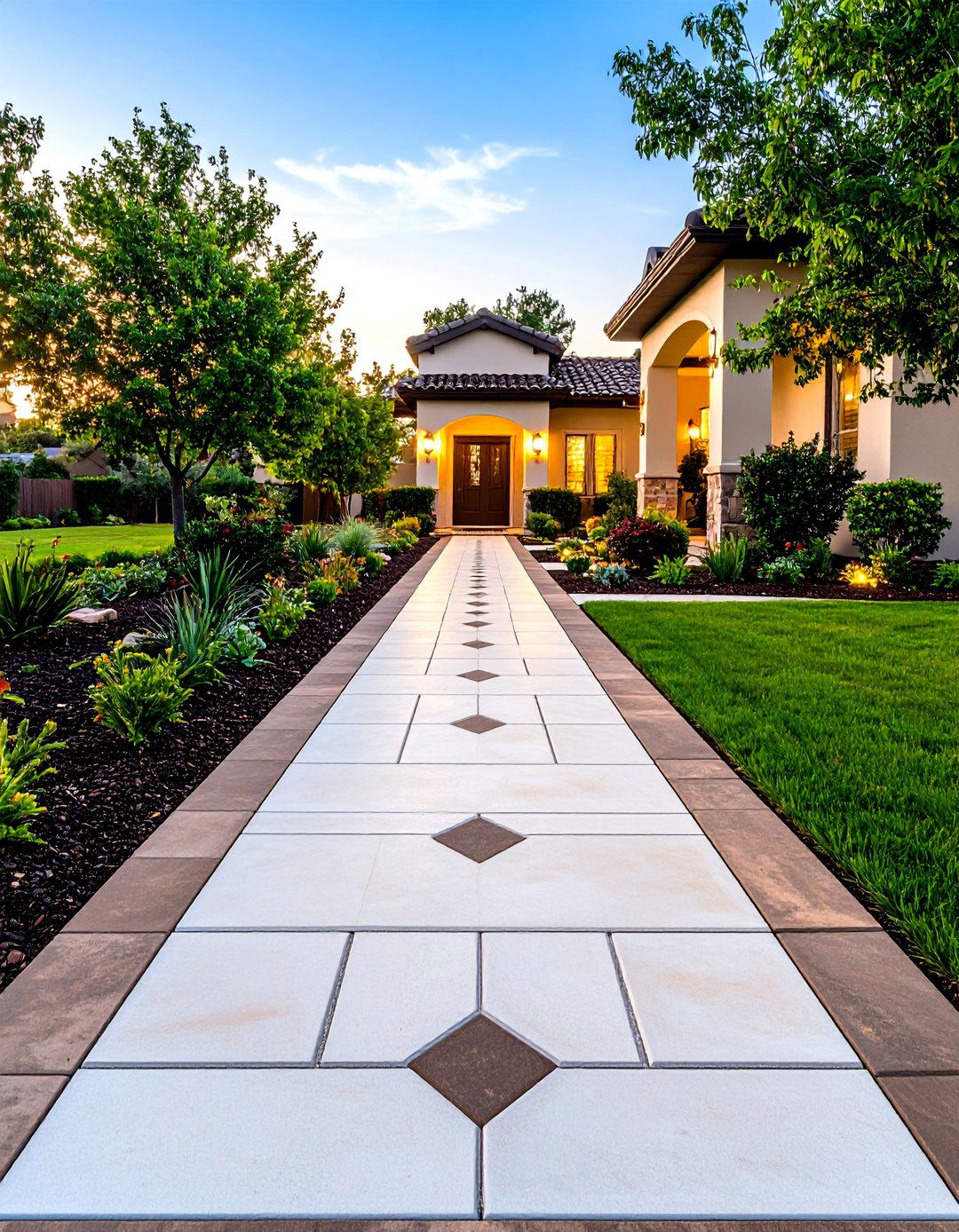
Transform ordinary concrete into elegant diamond-patterned surfaces through precise saw-cutting techniques that create sophisticated geometric designs. Diamond cut concrete is a decorative scoring technique that enhances the appearance of driveways, patios, and floors, offering a sophisticated finish. This technique involves cutting diamond-shaped patterns into cured concrete, creating the appearance of individual tiles with realistic grout lines. The most popular and cost-effective scoring pattern is a large grid design, sometimes cut on an angle to look like diamonds and often stained a shade of brown. Diamond patterns can be cut into concrete walkways to give an ordinary slab greater character and curb appeal, serving as faux grout lines. The angular geometry adds visual interest while maintaining the durability and affordability of concrete construction, making it an excellent compromise between aesthetics and practicality.
12. Stenciled Concrete Walkway Designs
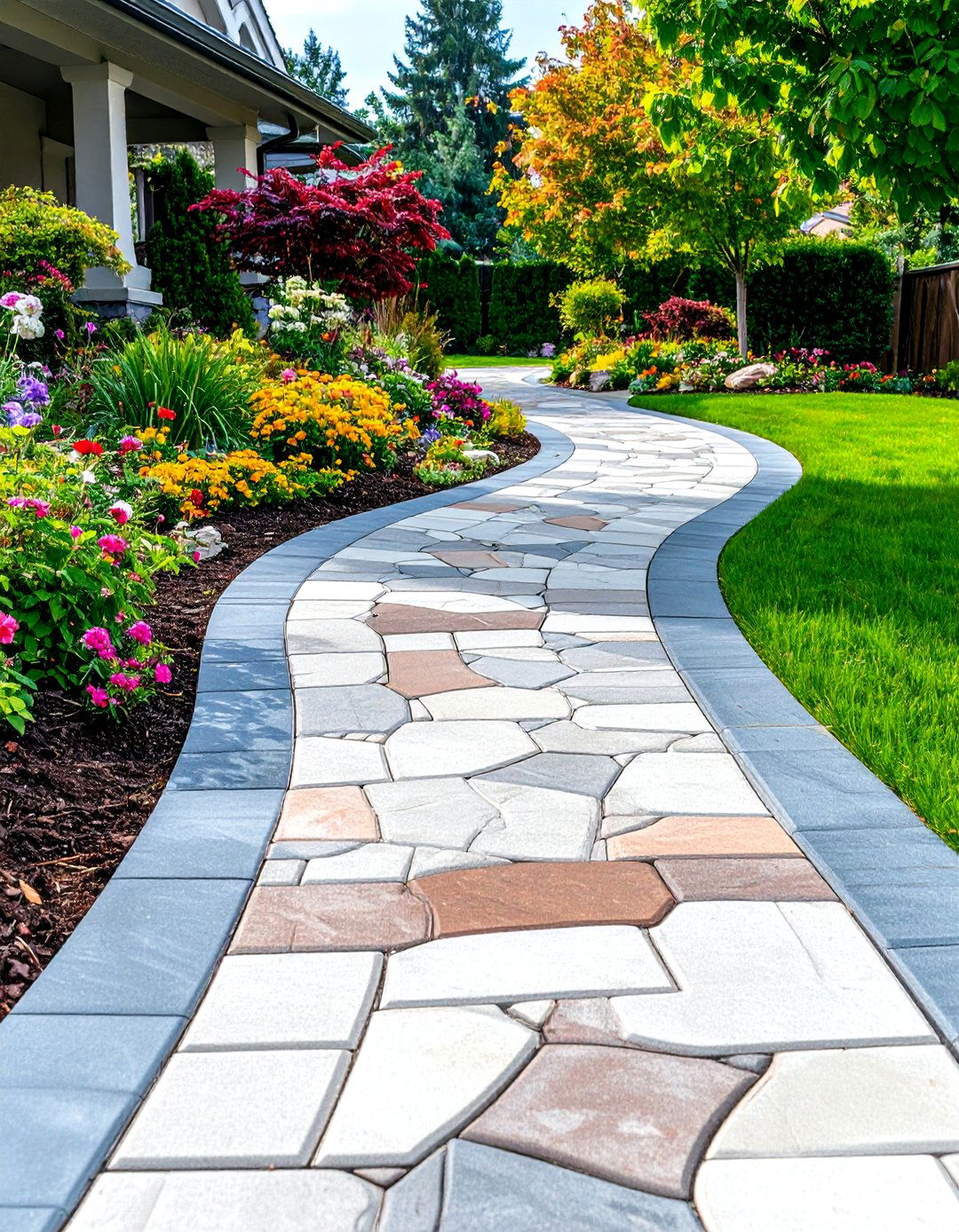
Achieve intricate decorative patterns with stenciled concrete walkway techniques that offer design flexibility similar to stamping but with unique advantages. Stenciling can be a great alternative to decorative stamping while permitting similar design flexibility, using disposable paper stencils to impart brick or stone patterns in fresh concrete. This method creates realistic mortar joints by masking the underlying surface, leaving behind authentic-looking individual stones or bricks. Artistic stenciled designs offer a fantastic way to personalize concrete walkways while adding sophistication through various customization techniques and intricate patterns. By applying a dry-shake color hardener to exposed concrete before stencil removal, you achieve the appearance of individual stones or bricks that have been mortared together. Stencil patterns range from traditional running-bond brick to stone, slate, and tile designs, providing extensive customization options at reasonable costs.
13. Integral Colored Concrete Walkway
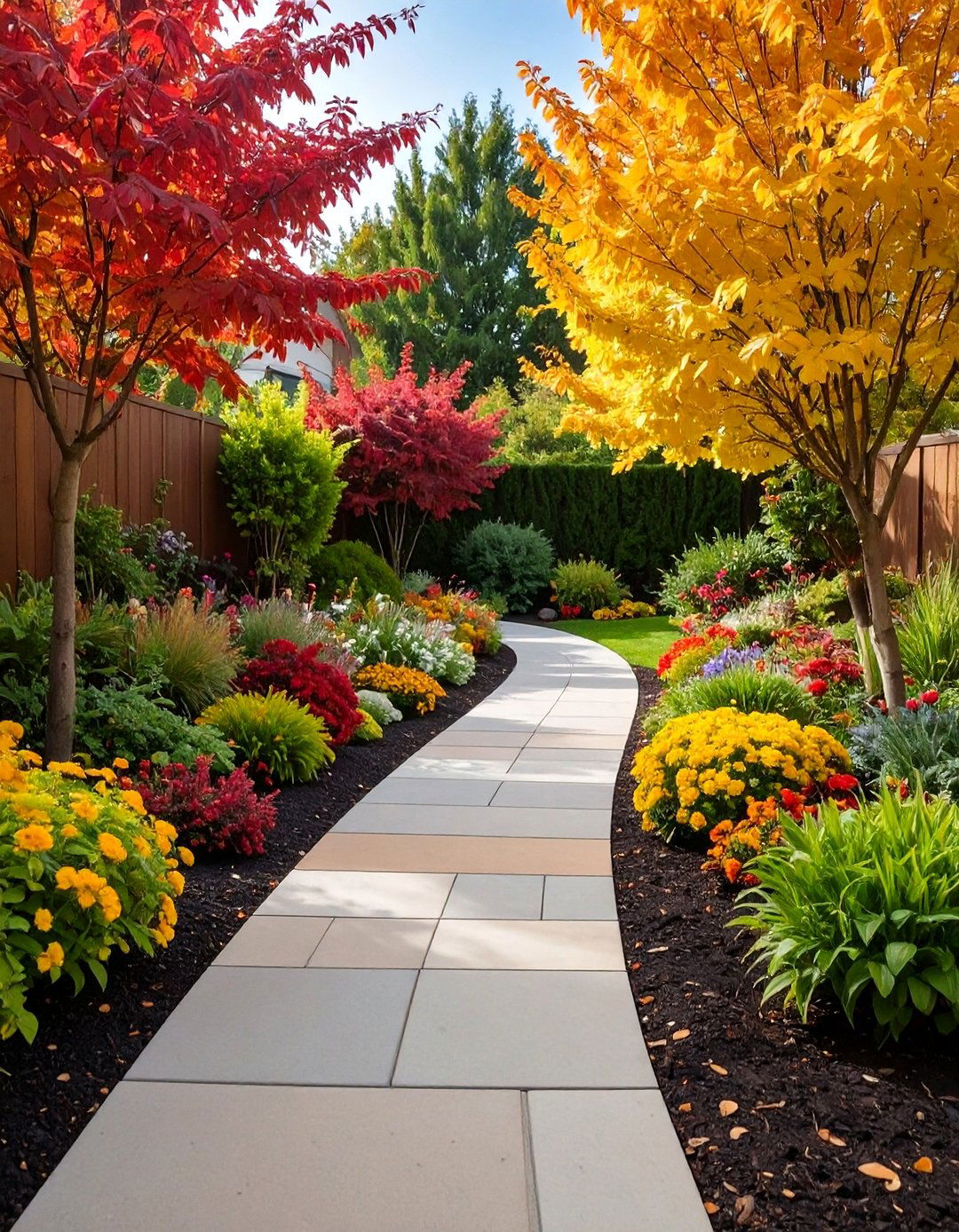
Create vibrant, long-lasting color throughout your concrete walkway using integral coloring techniques that resist fading and wear. You can choose to add integral color into the concrete mix, so the cement in between stones will add a complete color hue across the entire concrete surface. Unlike surface-applied stains, integral colors are mixed directly into the concrete during batching, ensuring consistent color throughout the entire slab thickness. This method provides superior color durability since the pigment permeates every inch of the concrete rather than just the surface layer. Using a color admixture where color is mixed throughout the concrete while wet works better than staining methods and creates more durable results. Integral coloring works exceptionally well with stamped patterns, exposed aggregate finishes, and smooth troweled surfaces, offering unlimited color possibilities from subtle earth tones to bold contemporary hues that complement modern architectural styles.
14. Saw Cut Grid Concrete Walkway

Develop sophisticated geometric patterns through saw cut grid concrete walkway designs that create the illusion of individual pavers or tiles. Scored concrete features a series of groves that have been cut into the concrete to create a distinct pattern or design, different from stamped concrete in that texture is not imparted onto the surface. This technique involves cutting precise lines into cured concrete to form grid patterns, squares, rectangles, or other geometric shapes. See how this concrete walkway is designed in 3' by 3' squares, demonstrating how concrete can be colored and textured to mimic natural stone, tile, brick and more. Straight wall borders and large square or rectangular tiles are the most popular decorative saw-cut patterns, while arcs, curves, circles, and diamonds are selected for more contemporary looks. The clean lines and mathematical precision create modern appeal while allowing for color variations within individual grid sections.
15. Concrete Walkway with Stone Accents
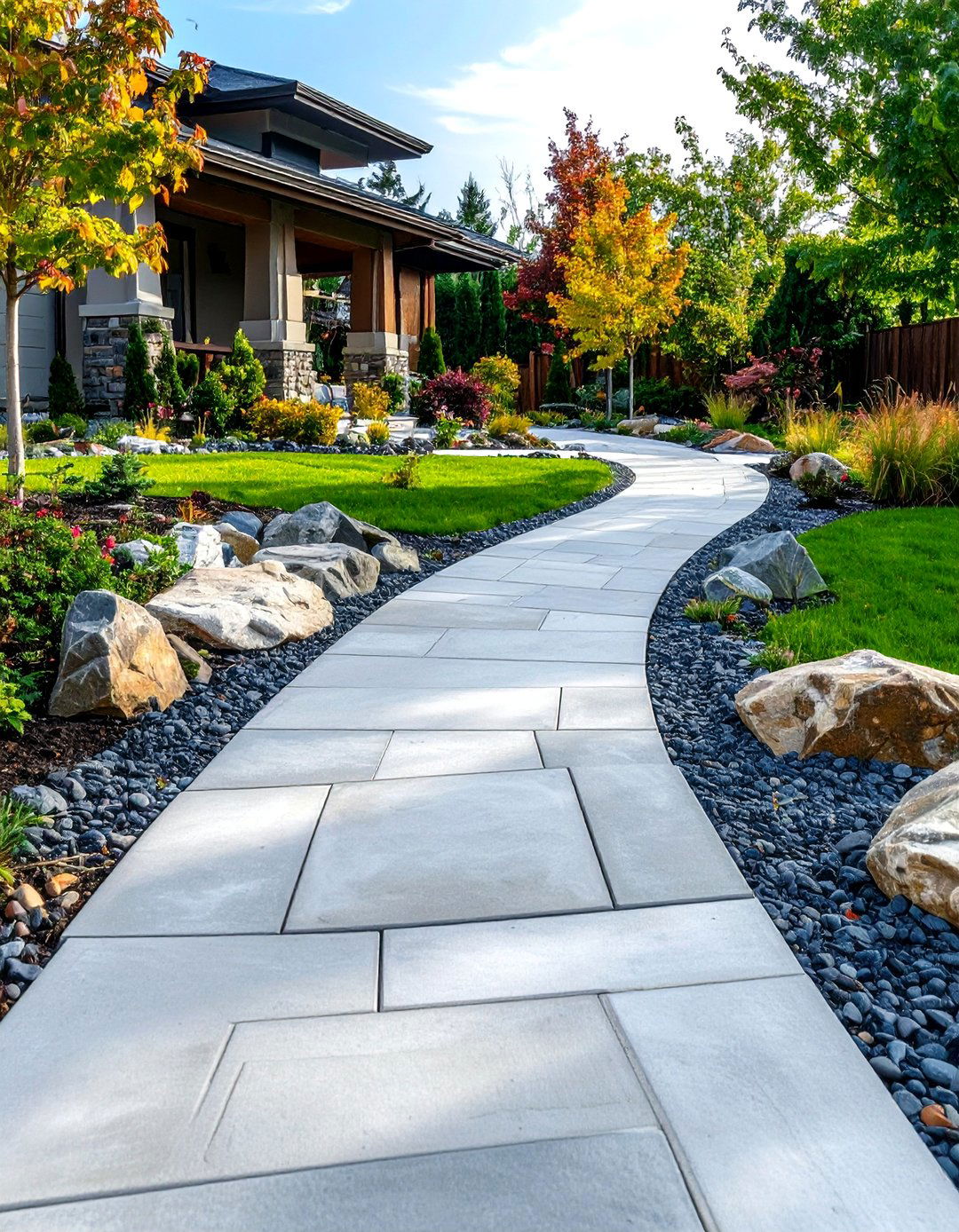
Blend natural materials with concrete construction by incorporating stone accents that create sophisticated mixed-material walkway designs. The combination of sturdy concrete slabs and loose gravel creates a beautiful dance between form and freedom, perfect for those who appreciate contrasts. This approach typically features concrete sections separated by natural stone borders, inlaid stone medallions, or decorative aggregate bands that add organic texture. Natural stone accents can include river rock borders, flagstone inserts, or decorative boulder placements that complement the concrete pathway. The contrast between smooth concrete surfaces and natural stone textures creates visual depth while maintaining practical walking surfaces. This design is successful because the colors are a perfect balance with the home and landscape, carrying earth-toned colors throughout the plant palette as well. Strategic stone placement allows for drainage solutions while creating opportunities for landscape integration.
16. Polished Concrete Walkway Finish
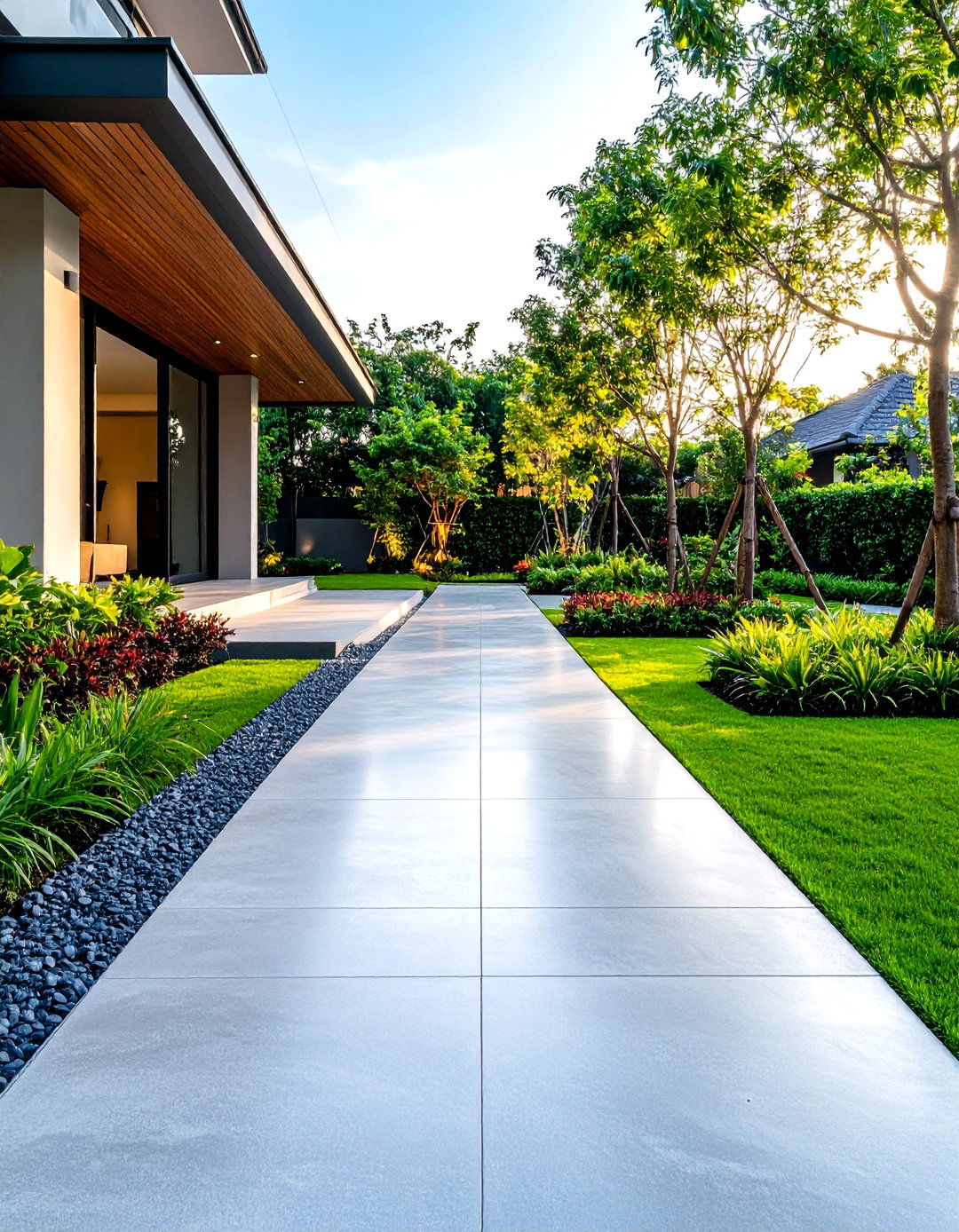
Achieve sleek, contemporary elegance with polished concrete walkway finishes that deliver smooth, reflective surfaces with exceptional durability. Consider the minimalist concrete pathway for those who appreciate subtlety and elegant design, with impeccably smooth finishes free of distractions that capture the essence of "Less is More". This technique involves grinding and polishing the concrete surface to create mirror-like finishes that reflect light and enhance outdoor spaces. Polished concrete can incorporate decorative aggregates that become visible during the grinding process, creating unique speckled patterns within the smooth surface. The resulting walkway provides easy maintenance, stain resistance, and superior longevity compared to other surface treatments. These designs are popular with those who believe that restraint is the key to true beauty, commanding attention through simplicity rather than elaborate decoration. Multiple polish levels are available, from subtle satin sheens to high-gloss mirror finishes.
17. Textured Concrete Walkway Surfaces

Create safe, slip-resistant walkways through specialized texturing techniques that combine functionality with attractive surface patterns. It almost seems as though you're walking on gravel when making your way to the front door, however, it's a textured, mixed colored surface that doesn't move beneath your feet. Various texturing methods include broom finishing, rock salt texturing, and specialized roller patterns that create consistent surface roughness. To create an attractive, skid-resistant surface, you can finish concrete with spray-textured coating or give it a rock salt finish. These techniques significantly improve traction in wet conditions while adding visual interest through subtle pattern variations. Exposed aggregate finishes create naturally slip-resistant walking surfaces that are both beautiful and functional. Textured surfaces work particularly well in climates with frequent precipitation or areas where safety is paramount, such as elderly-accessible pathways or pool deck connections.
18. Limewash Concrete Walkway Technique
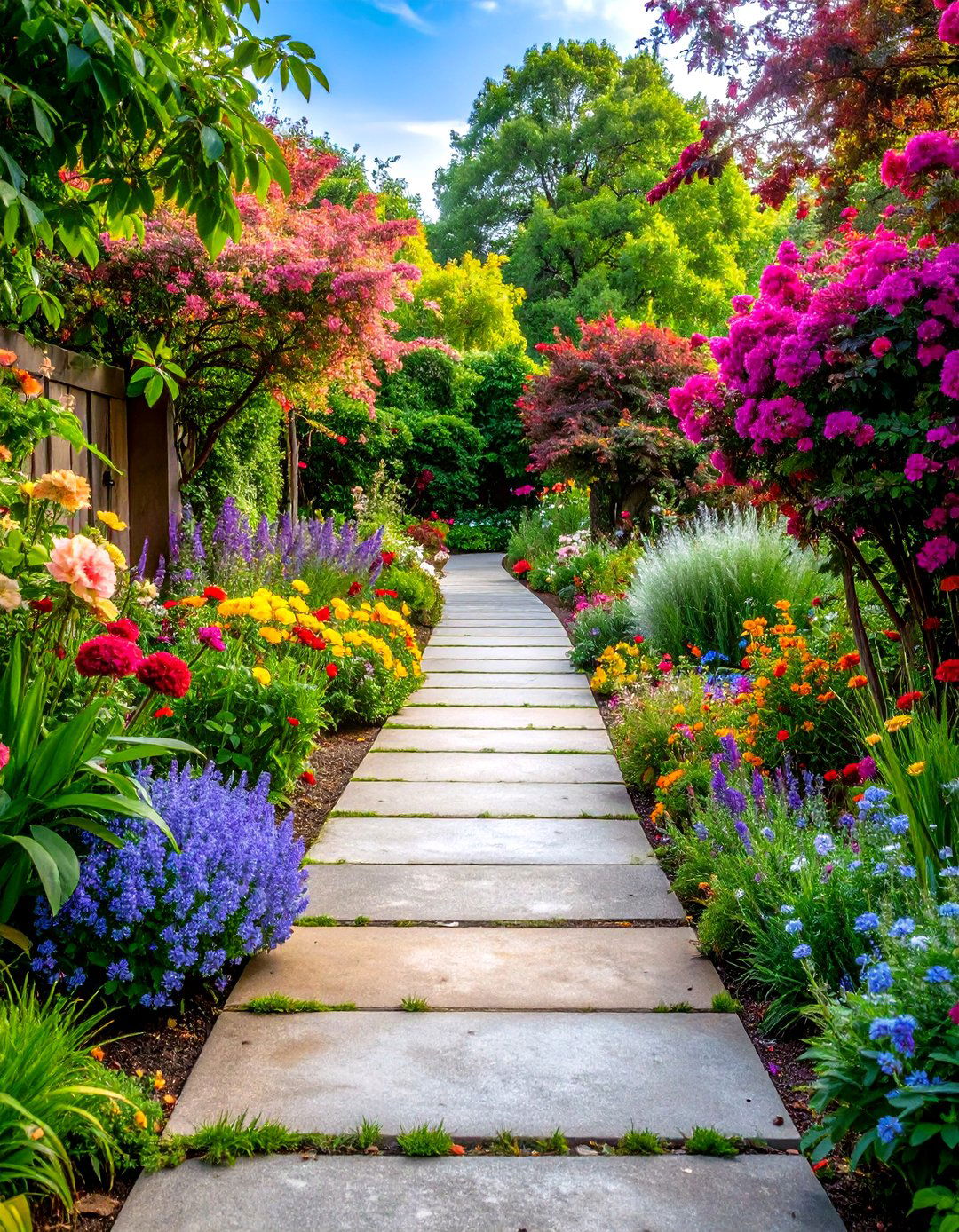
Embrace old-world charm with limewash concrete walkway techniques that create rich, aged patinas reminiscent of historic European streets. Limewash concrete gives your walkway a rich, aged patina that tells stories and speaks of the past, creating not just a pathway but a work of art. This specialized finishing method applies lime-based washes to concrete surfaces, creating subtle color variations and weathered appearances that develop character over time. The technique involves multiple thin coats of limewash that react with the concrete substrate to produce unique mottled effects and soft color transitions. This is a great option for those interested in subtle design details and wanting to create a unique outdoor space with historical character. Limewash finishes improve with age and weather exposure, developing deeper patinas and more pronounced character marks that enhance rather than detract from the walkway's appearance over years of use.
19. Radial Pattern Concrete Walkway
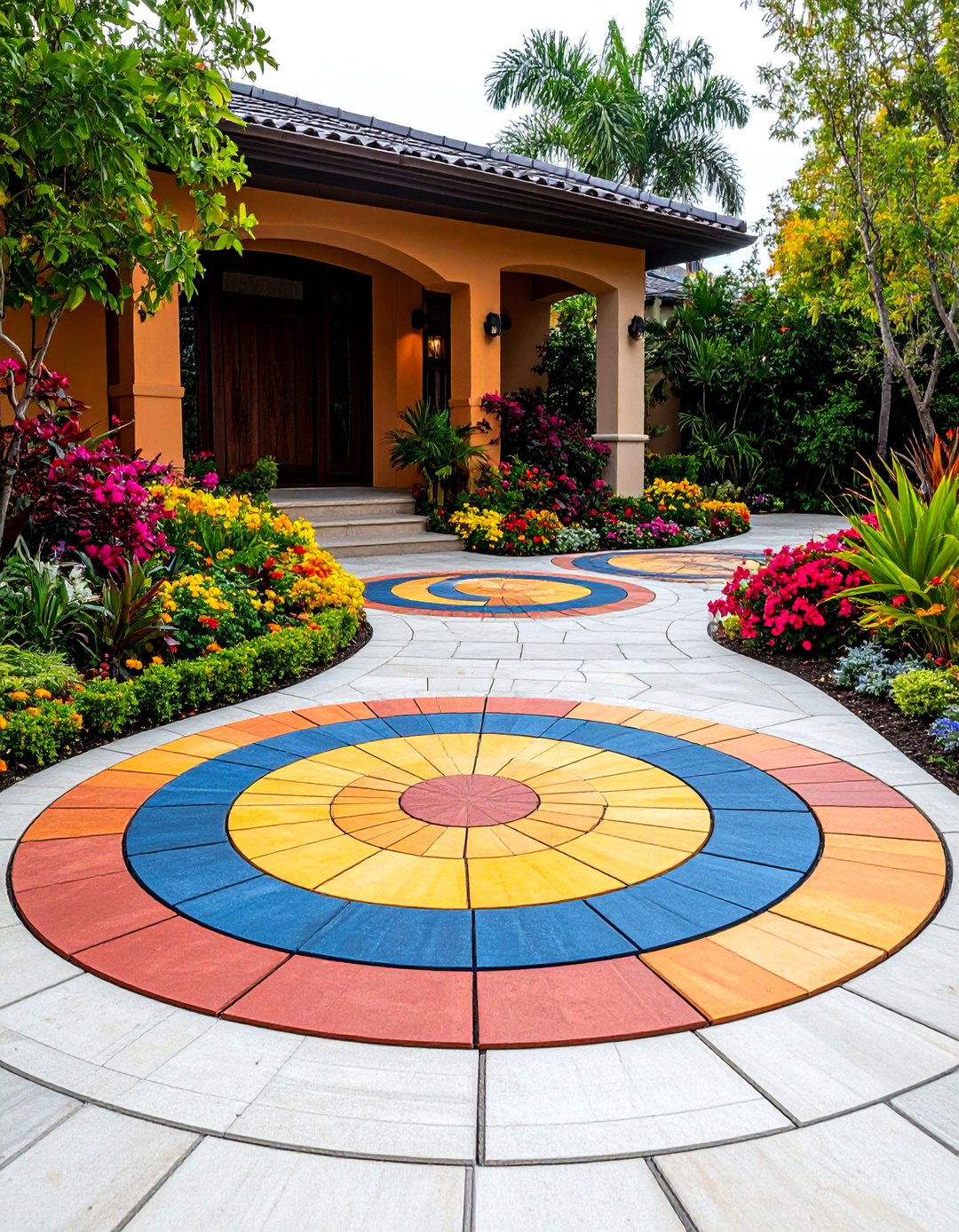
Design striking focal points with radial pattern concrete walkways that feature circular motifs and radiating geometric elements. Radial cuts are possible for saw cut concrete and can create unique designs that differ from traditional square and rectangular patterns. These designs typically incorporate central medallions with radiating lines, concentric circles, or spiral patterns that draw attention and create dramatic entries. Circular designs work particularly well in entryways and lobbies, with concentric circles and radiating lines creating impressive focal points. Arcs, curves, circles, and diamonds are selected for more contemporary or artistic looks compared to traditional straight patterns. Round concrete steps invite exploration of freeform geometric shapes, embracing curves and moving away from straight lines to bring fluidity and creativity. The mathematical precision of radial designs creates sophisticated patterns that complement both traditional and contemporary architectural styles while establishing clear focal points for landscape design.
20. Mixed Pattern Concrete Walkway Design
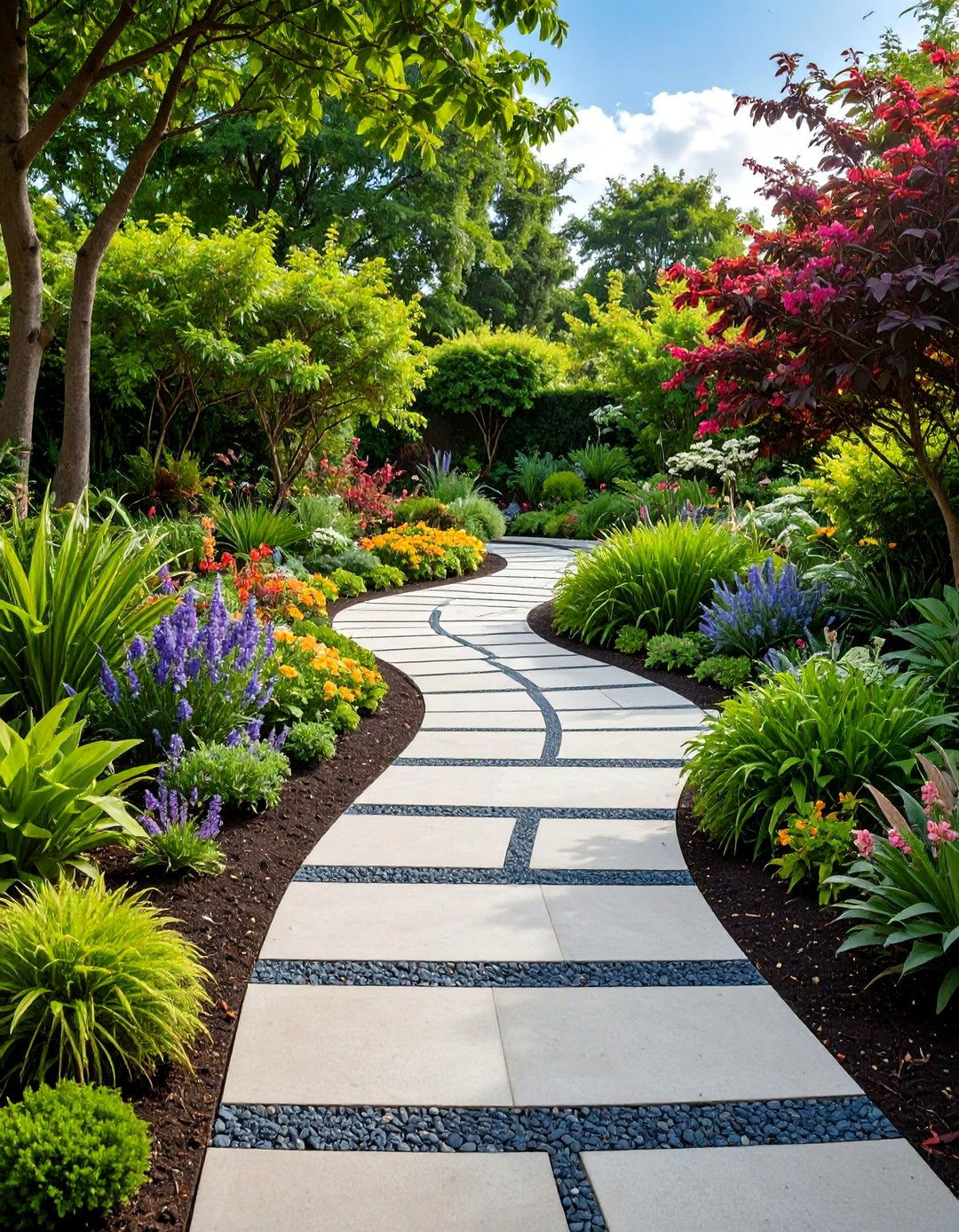
Combine multiple decorative techniques to create unique mixed pattern concrete walkways that showcase various textures, colors, and design elements. Accent squares of various sizes or scored patterns on top of textured concrete can mimic natural stone, while intersecting bands stained different colors break up sections. This approach might integrate stamped borders with smooth centers, exposed aggregate sections with polished bands, or geometric cuts with organic curved elements. Place exposed aggregate in bands or fields separated by joints, wood divider strips, or bands of contrasting decorative treatments using chemical stains to highlight elements. Mixed pattern designs allow complete customization while accommodating existing landscape features, architectural elements, or budget considerations. Vary the degree of aggregate exposure from light to heavy to create multiple textures within a single walkway design. The key to successful mixed patterns lies in maintaining visual coherence through consistent color palettes or repeated geometric elements that tie diverse sections together.
Conclusion:
Concrete walkways offer endless possibilities for creating stunning, durable pathways that enhance your home's curb appeal and functionality. From traditional stamped patterns that replicate natural materials to contemporary geometric designs and specialized finishing techniques, modern concrete technology provides options to suit every aesthetic preference and budget. Stamped concrete walkways provide an affordable way to achieve high-end looks without sacrificing performance, combining aesthetic appeal with long-lasting, easy-to-maintain surfaces. Whether you choose exposed aggregate for natural texture, acid staining for organic color variations, or precision-cut geometric patterns for modern appeal, your concrete walkway will serve as both a functional pathway and an artistic statement that welcomes visitors to your home.


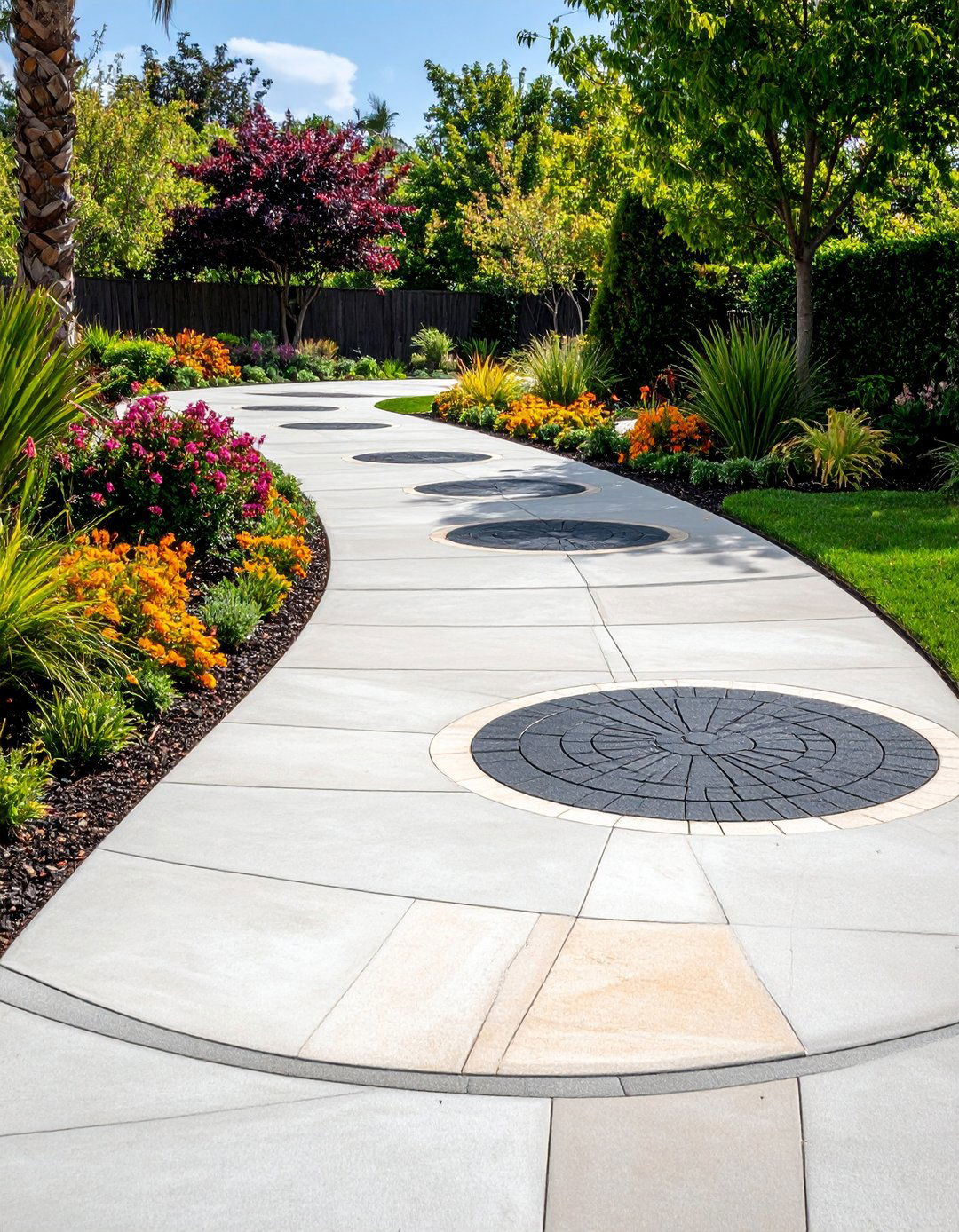
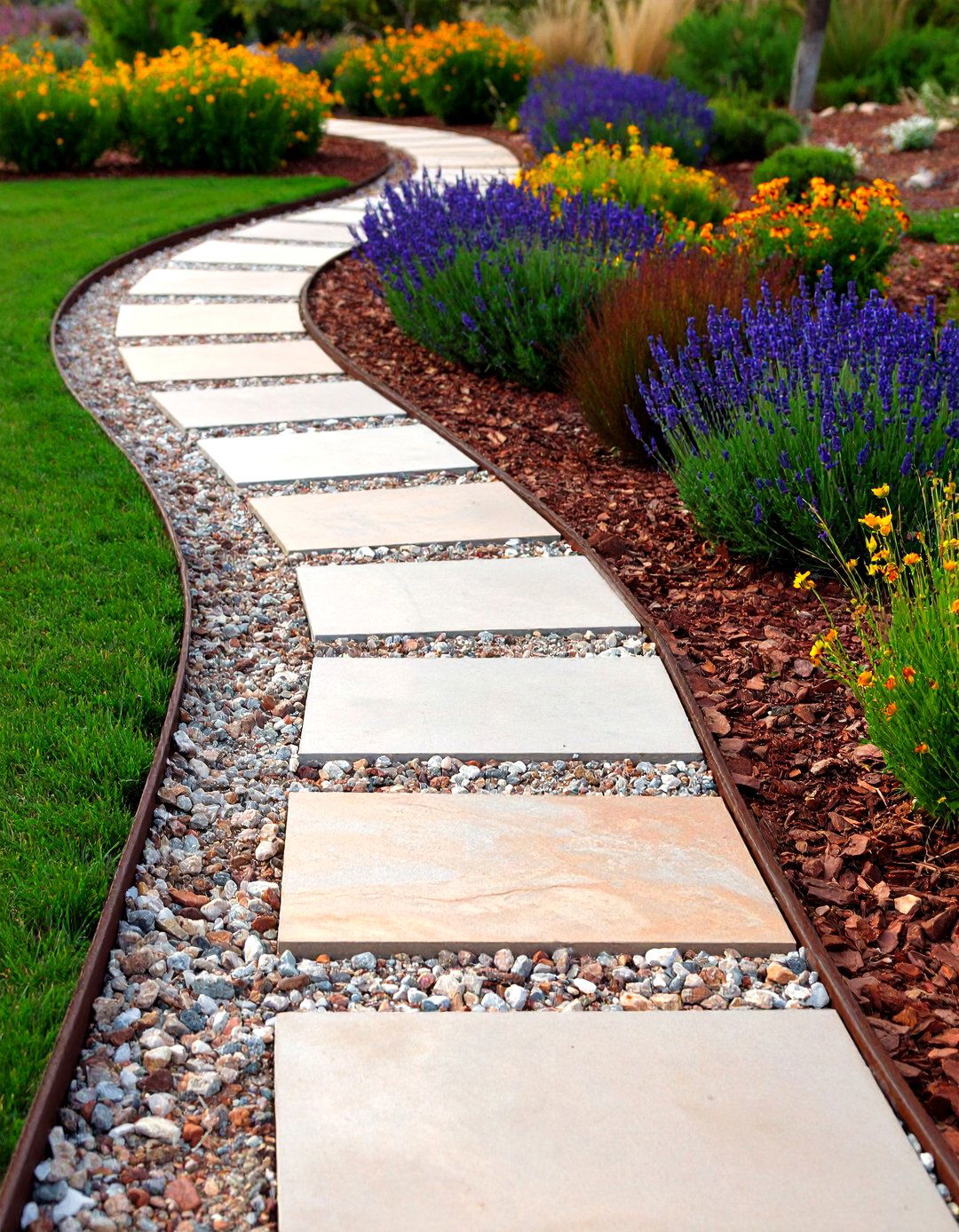

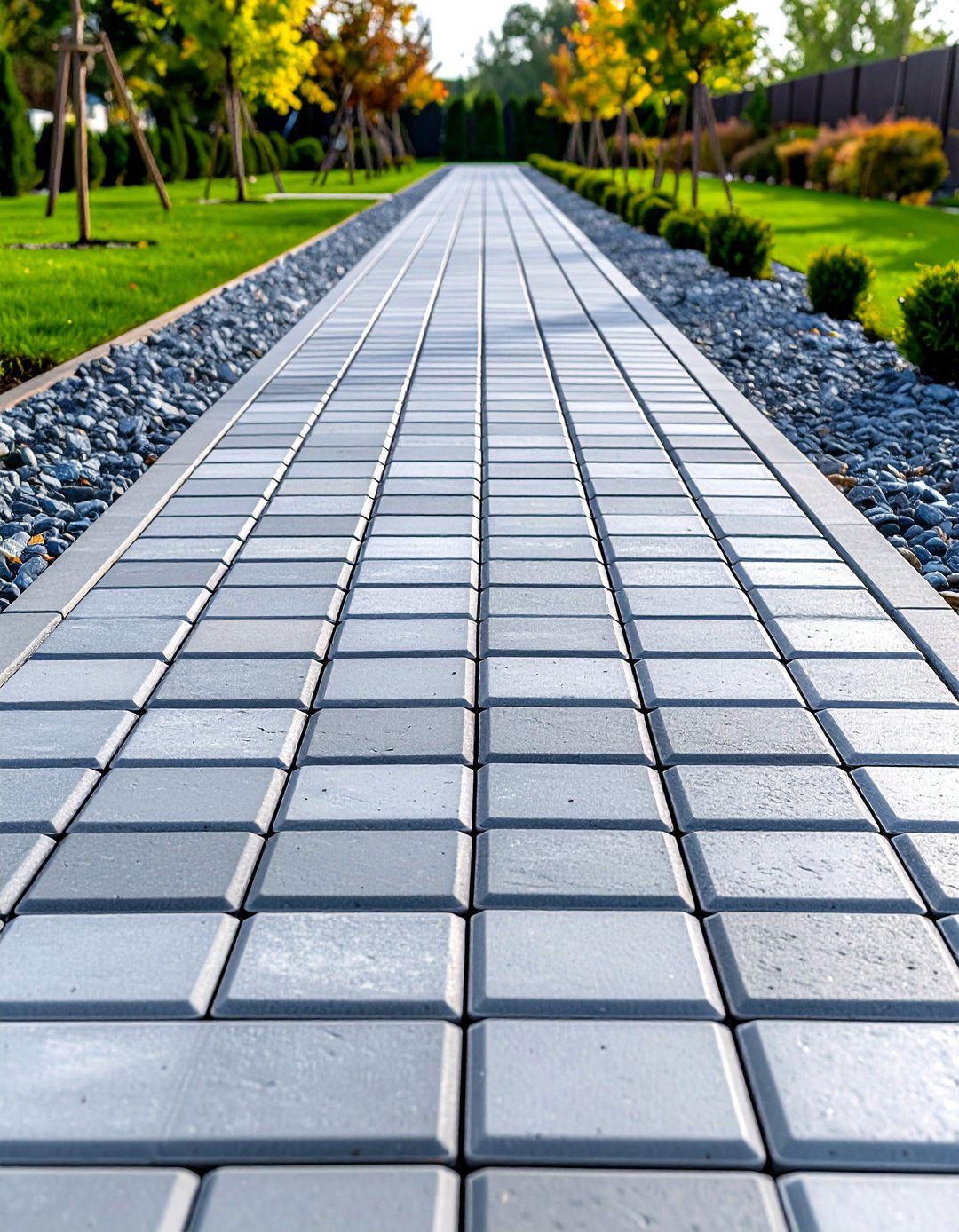
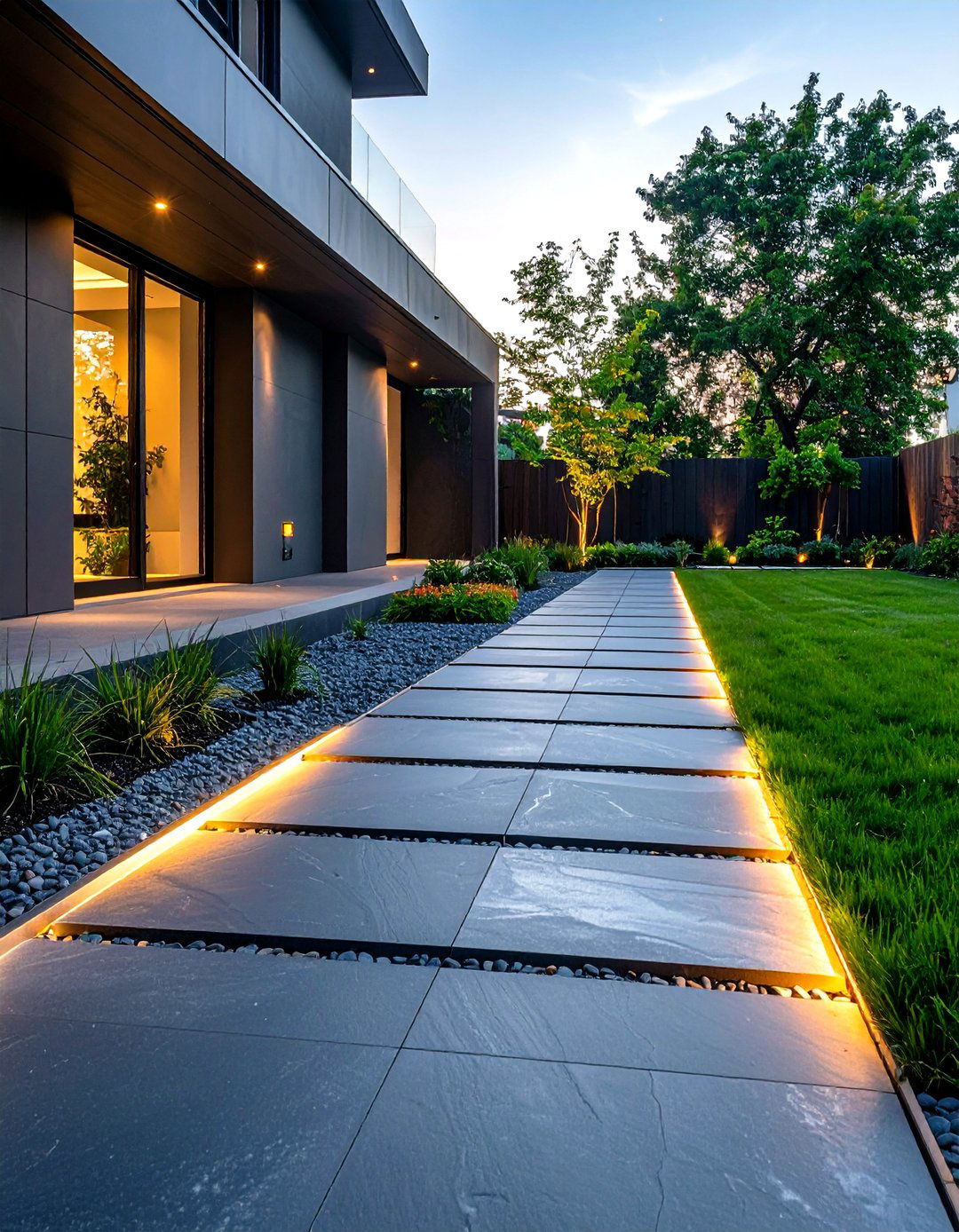
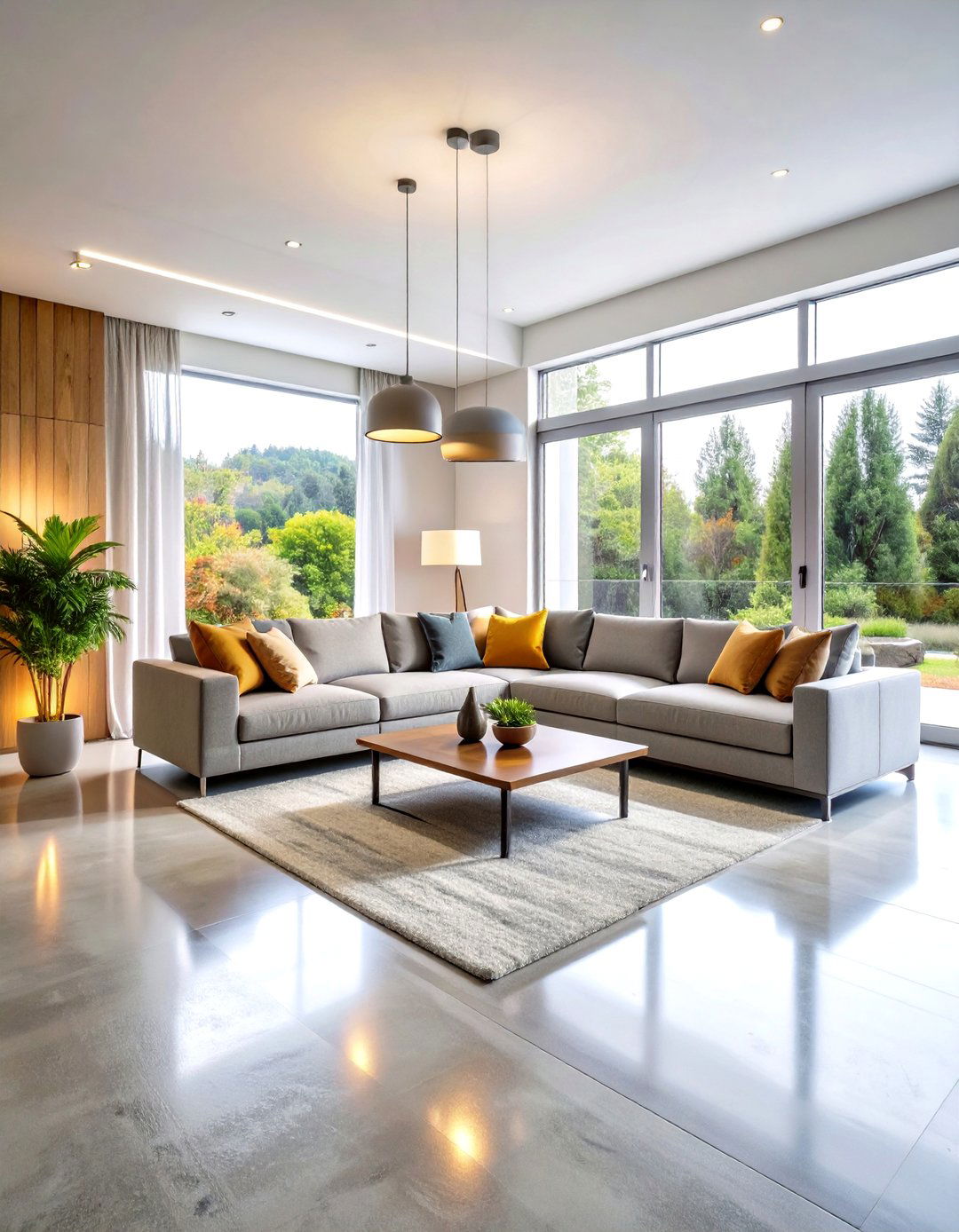
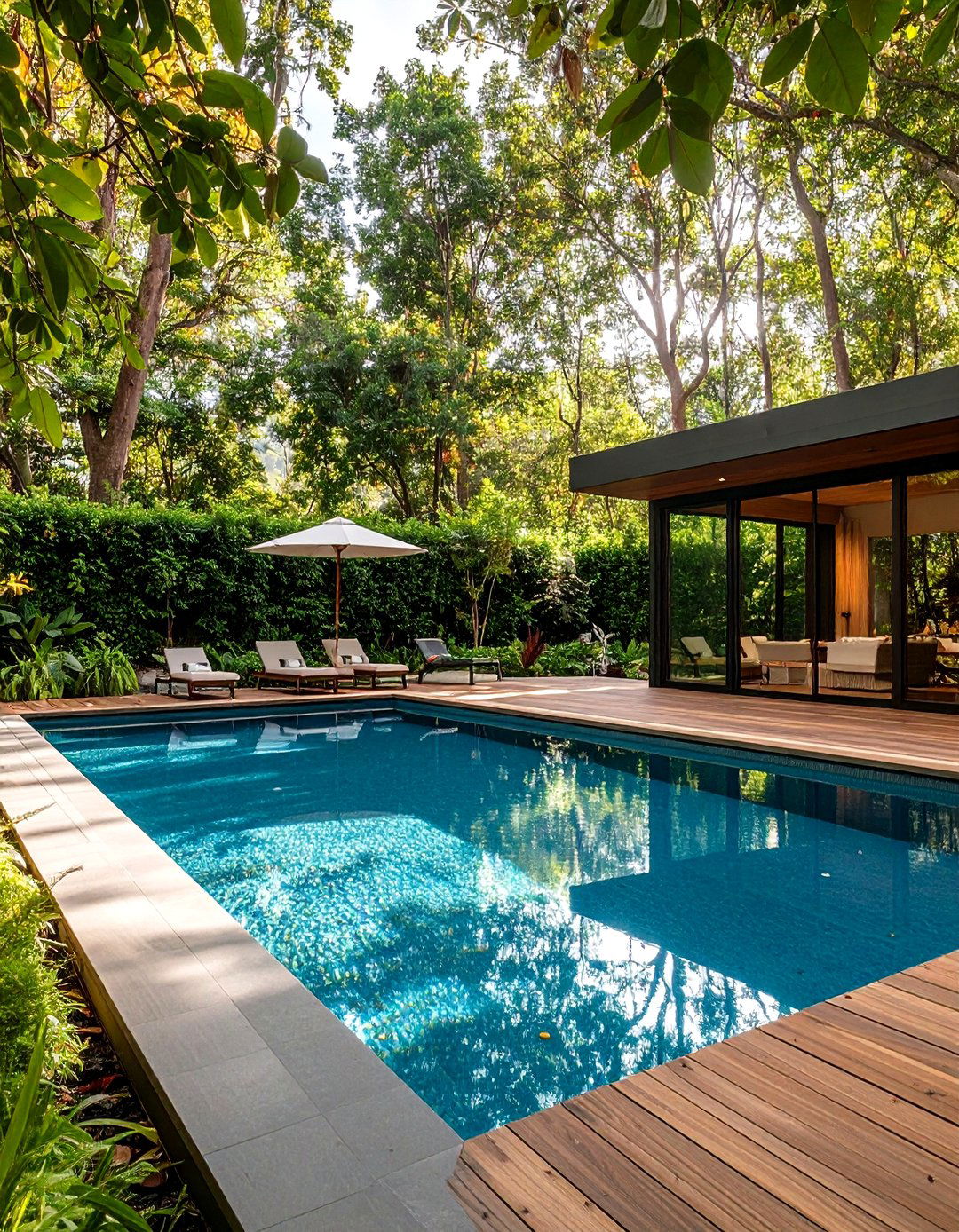
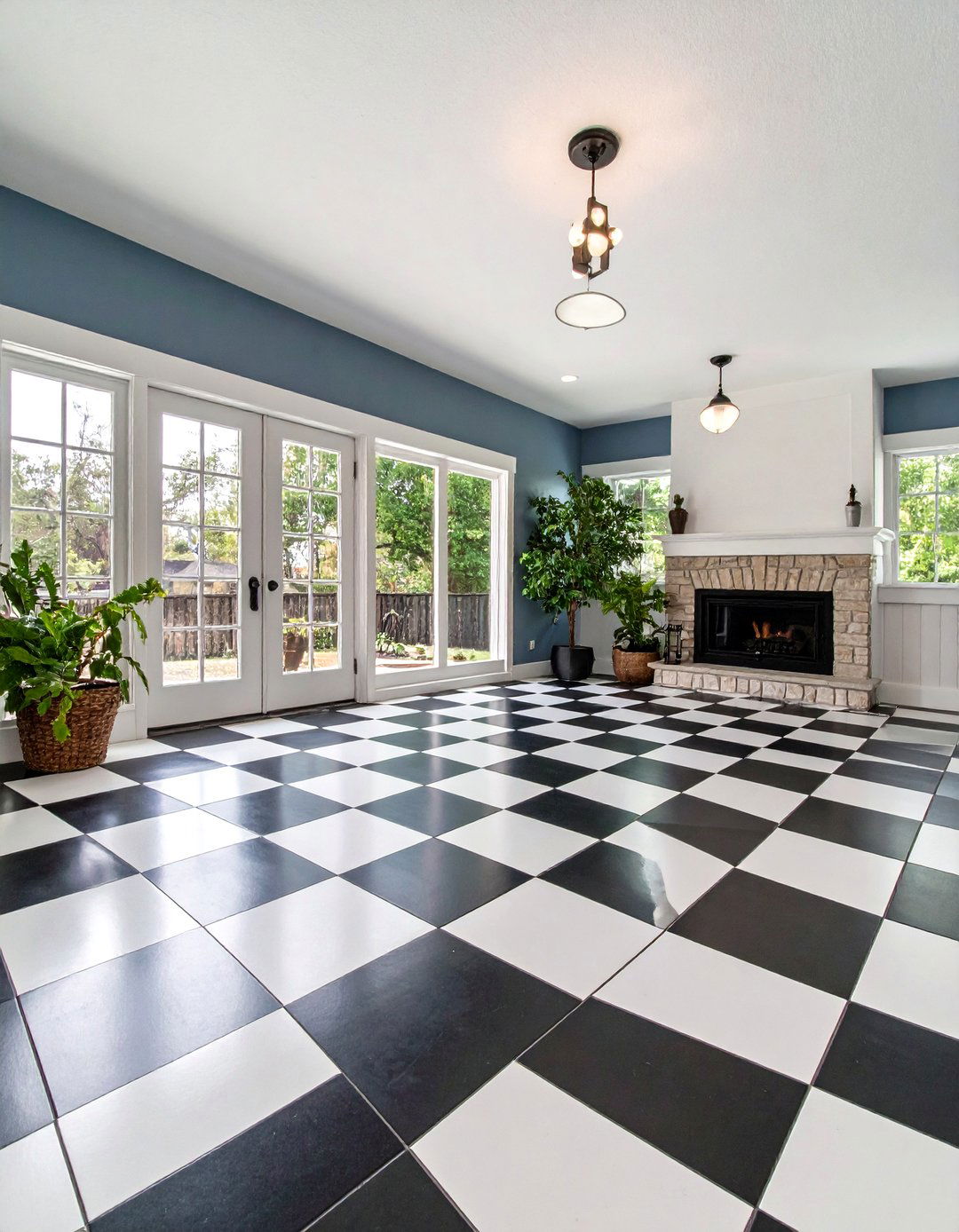
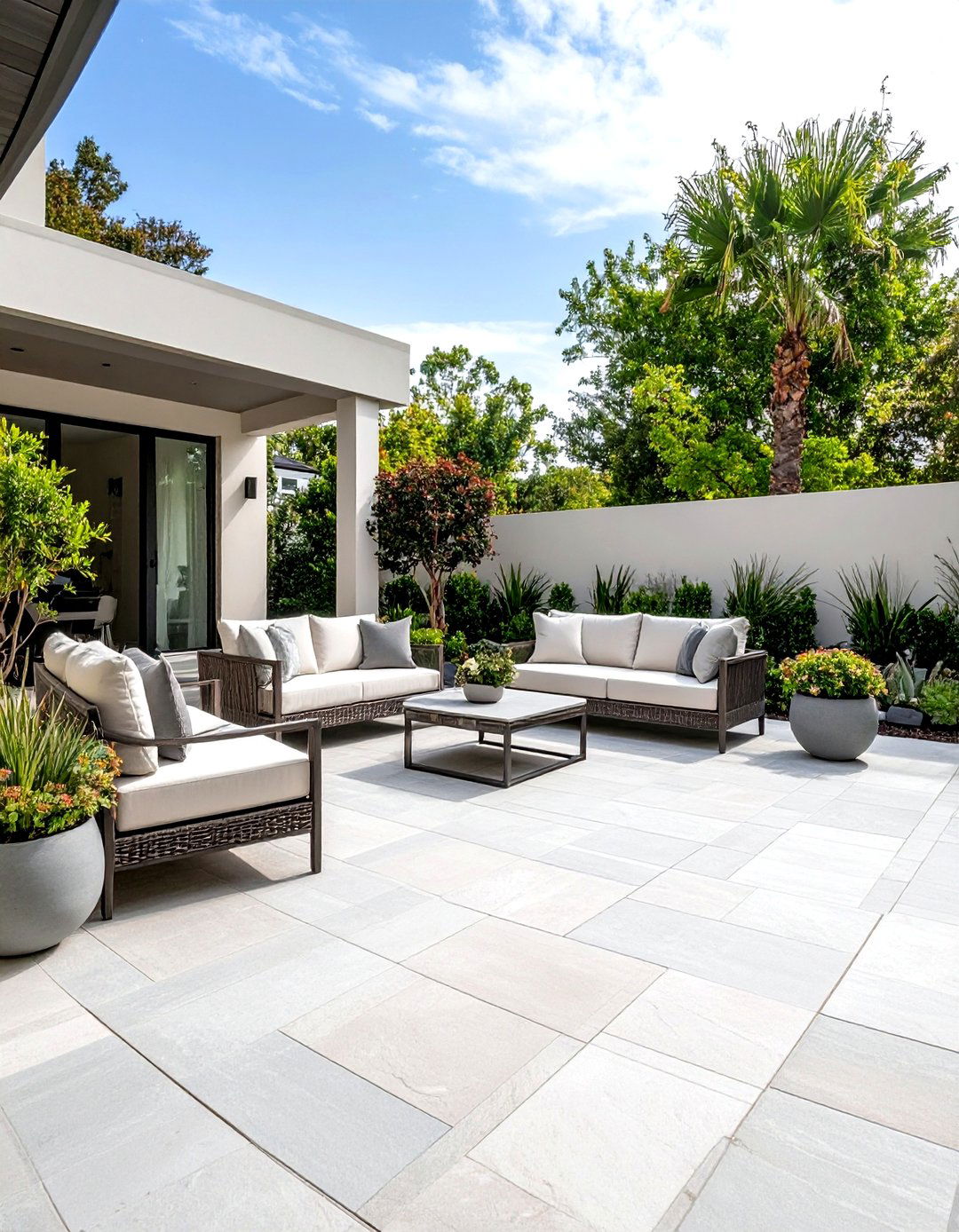


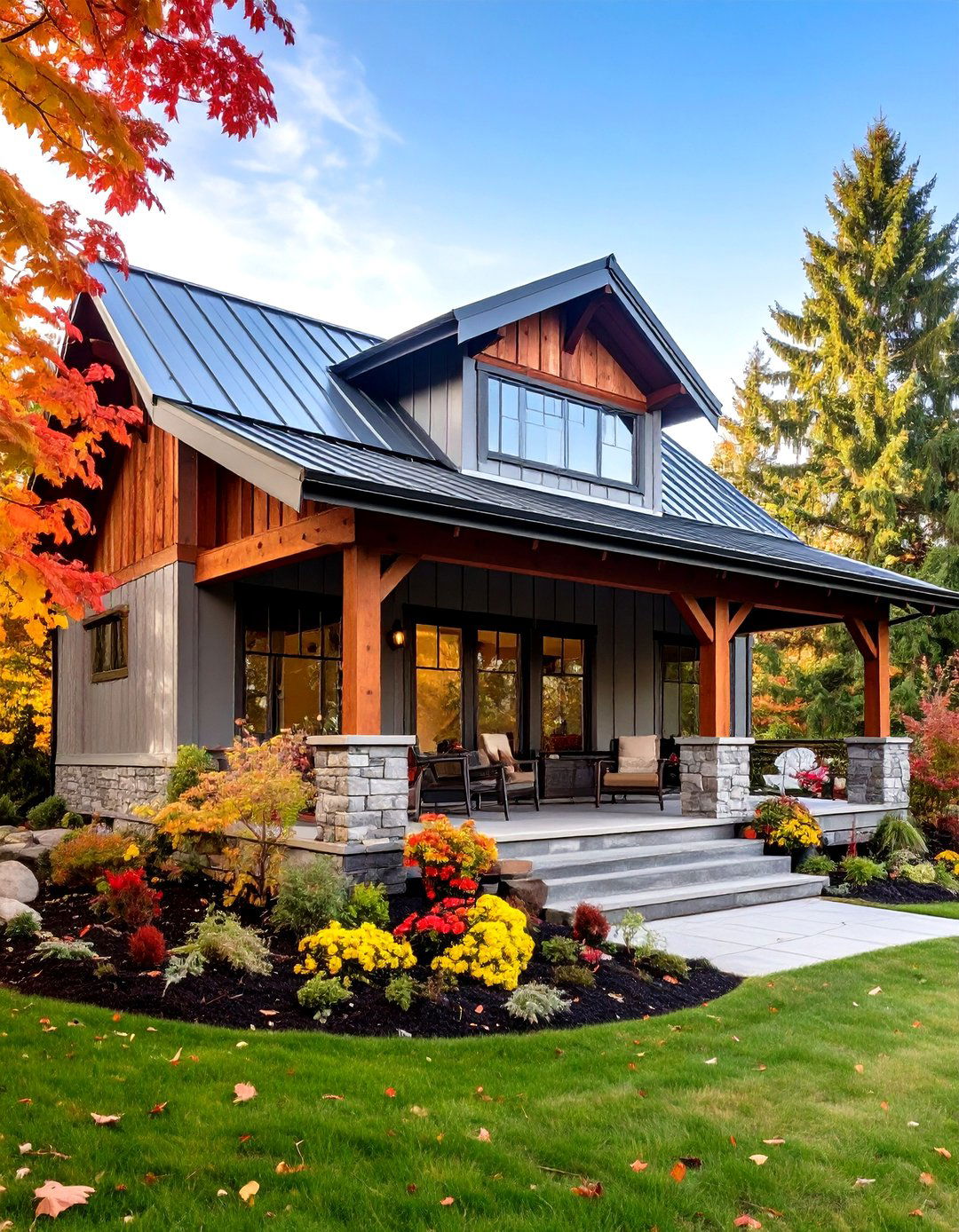


Leave a Reply